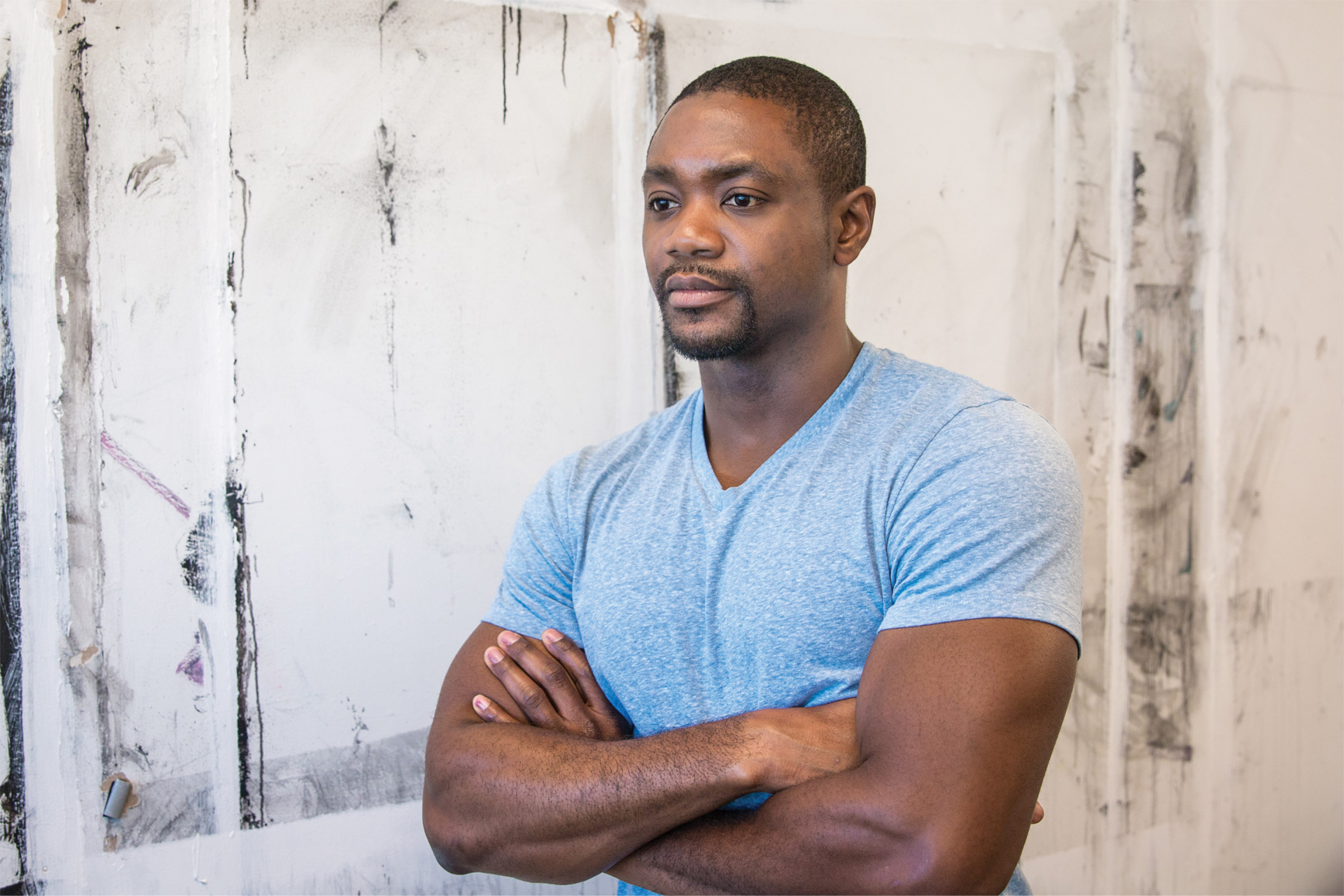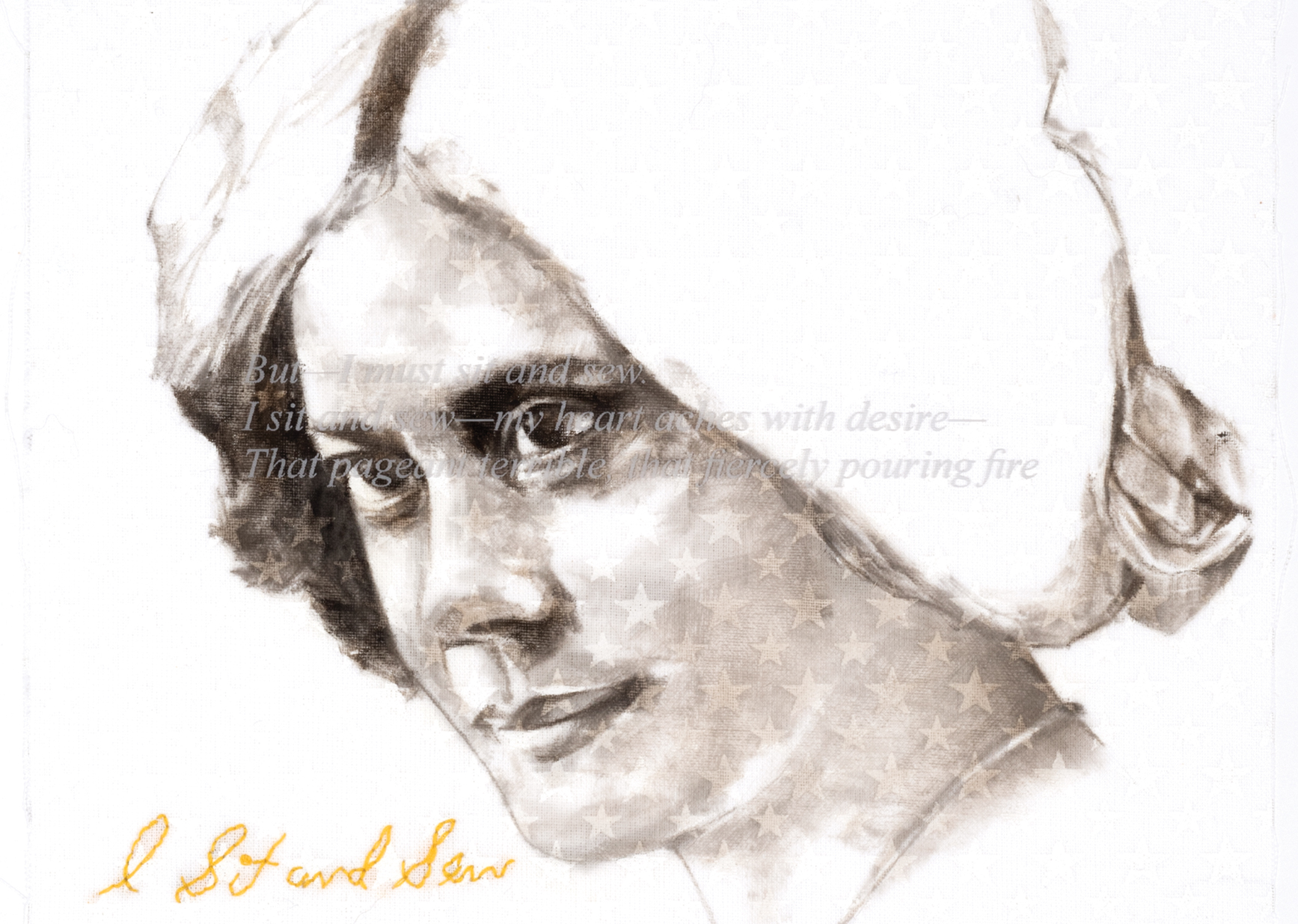About the Exhibition
For this most recent Delaware Art Museum commission, Charles Edward Williams commemorated the life of Alice Dunbar-Nelson, the poet and political activist who spent most of her career writing and lecturing in Wilmington. The works of art are displayed alongside historical portraits in the Museum’s early American galleries until February 6, 2022. An intervention of sorts into this gallery space, Williams’ exhibition honors the life of this important literary figure as her image joins the faces of others in the room.
Artist Charles Edwards Williams’ recent projects draw on historical photography of the Civil Rights Movement. Pairing vibrant colors with distinct portraits, Williams establishes an emotional connection between the image and the viewer. When exploring Alice Dunbar-Nelson’s life, Williams began by surveying Dunbar-Nelson’s diaries, photographs, and published works.
Alice Dunbar-Nelson’s life spanned many significant historical events. She was born in New Orleans just ten years after Union troops arrived in Texas on June 19, 1865 to declare the freedom of enslaved Black people in that state, a date we now mark as Juneteenth. She witnessed the ratification of the women’s right to vote in 1920, as well as World War I, and the Great Depression. Throughout her poetry and personal writing, Dunbar-Nelson reflected on these, and many other, key social and cultural moments. Williams was drawn to Dunbar-Nelson’s frustration with the hindrances of a male-dominated world and her determination to actively respond to the first World War. His multimedia work, I Sit and Sew, explores this tension. Referencing Dunbar-Nelson’s 1918 poem of the same name, Williams’ seven-panel piece layers the etched lines of her poem over paintings of her image. Across the star-patterned linen support, Williams has stitched the words, I Sit and Sew. The artist used the physical act of sewing as an interpretation of Dunbar-Nelson’s poem and her desire to aid in the war efforts. She writes,
My soul in pity flings
Appealing cries, yearning only to go
There in that holocaust of hell, those fields of woe—
But—I must sit and sew.
(Dunbar-Nelson, 11-14).
When faced with this inner conflict, both writer and artist chose a seemingly tedious task that has historically been considered women’s work. Interestingly, embroidery was used as a form of therapy for soldiers wounded during World War I. Williams describes the meditative work as “spiritual, reflective, and transformative.” With each stitch, progress is made.
In Wish You Were Here, Williams follows Dunbar-Nelson’s travels and leisure time fishing along the banks of the Mississippi, Platt, Mystic, and Potomac Rivers. The artist’s paintings of her are less formal, more intimate, and over them Williams used fishing line to trace the shape of the rivers. In this way, Williams makes the literary giant approachable.
Williams’ I AM (Queen), is the most formal portrait of Alice Dunbar-Nelson, and elements within the composition are layered with meaning. The treatment of her dress references her racial background growing up in a Creole community in Louisiana. Dunbar-Nelson’s mother was Black and her father was white, and the poet wrote about her experience navigating two racial identities. The transition from the darker to lighter fabric across her shoulders indicates the barriers she felt connecting to both races.

The Artist’s Reflections
Charles Edward Williams reflected on this project:
As an American visionary, writer, and political activist, Alice Dunbar-Nelson sought after the truth of the human spirit and the vast wonders of togetherness. In her challenging circumstances, she remained faithful to self-discovery and shared those tender truths for helping us, humans, find our way.
Socially confined and racially unbound, her plight for redeeming souls became the forefront of her vision. In a world where she felt alone, she shared in her writings what it felt to be connected. Each day, we must have the inner strength to learn to become part of a more significant cause for others and, more importantly, for ourselves.
Alice Dunbar-Nelson: A Vision for Wilmington
Charles Edward Williams’ exhibition, I Sit and Sew: Tracing Alice Dunbar-Nelson, aligns with David Kim’s community engagement project, Alice Dunbar-Nelson: A Vision for Wilmington. Kim is a Whiting Foundation fellow and an Assistant Professor in the Department of English at the University of Delaware, where the Alice Dunbar-Nelson Papers reside.
David Kim wrote about the poet and political activist:
Alice Dunbar-Nelson (1875-1935) is one of the most important figures in the canon of Black women writers. Born in New Orleans, she moved to Wilmington, Delaware where she lived a life of letters and activism. She wrote poems, short stories, essays, novels, and a nationally syndicated column, all in her unique voice that often challenged both the literary conventions and the political alignments of her time. As an activist and educator, she organized the women’s suffrage movement, headed the anti-lynching activism, and founded schools in advocacy for Black girls. She often wrote passionately about Wilmington, as her home and cause.
A sampling of Dunbar-Nelson’s poetry can be found online.
About the Artist
Charles Edward Williams was born in 1984 in Georgetown, South Carolina. Williams completed his bachelor of fine arts degree at the Savannah College of Art and Design in 2006 and his master of fine arts degree from the University of North Carolina in Greensboro in 2017. Between 2016 and 2019, Williams attended residencies at the Otis College of Art and Design and SOMA Mexico City. Additionally, he was an artist-in-residence at the Gibbes Museum of Art and the McColl Center of Art and Innovation.
Williams has received numerous awards and grants for his work including a Mississippi Humanities Council Grant and a National Endowment for the Arts Grant. Solo exhibitions of Williams’ projects have been presented at the Urban Institute for Contemporary Arts in Grand Rapids and the Southeastern Center for Contemporary Art, among others. He has participated in group shows at the Knoxville Museum of Art, Wadsworth Atheneum Museum of Art, and Allentown Art Museum, among other galleries and museums across the United States and abroad. Williams is represented in numerous collections including the Mississippi Museum of Art, 21c Museum Hotels, the North Carolina Museum of Art, and the Petrucci Family Collection of African American Art.



